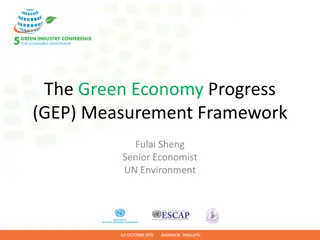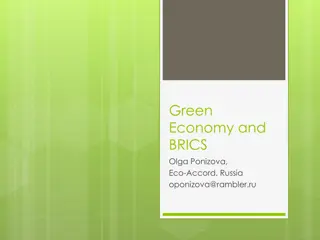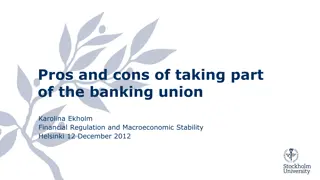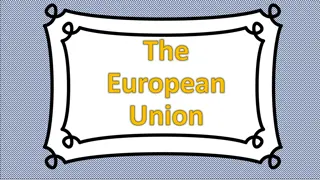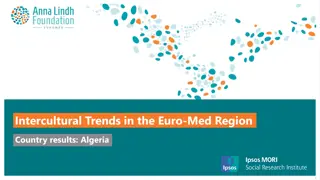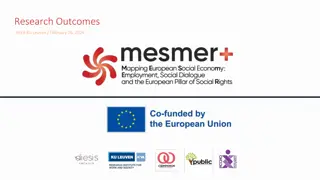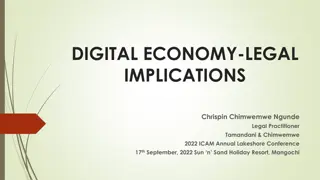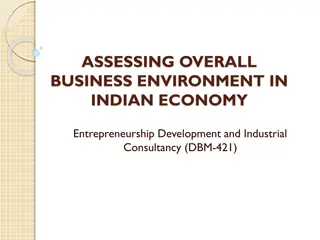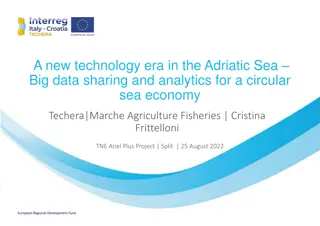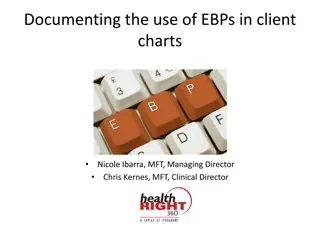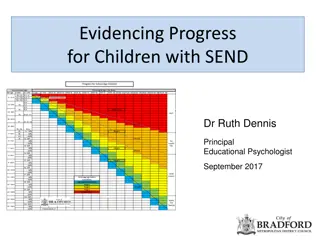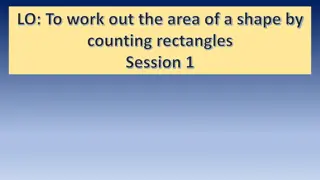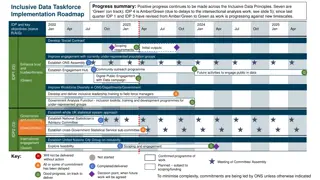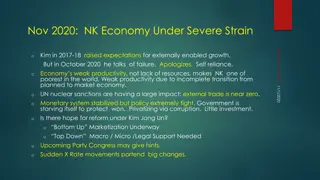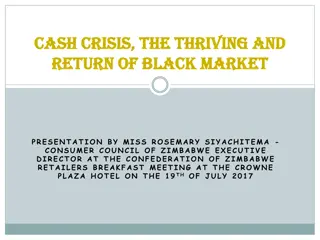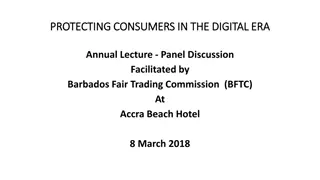Challenges and Progress in the Euro Area Economy
The International Monetary Fund (IMF) analyzes the Euro Area economy, highlighting the ongoing recovery, but also the challenges such as high unemployment, slow progress in deleveraging, and lagging structural reforms affecting potential growth. The discussion includes data on GDP growth contribution, unemployment rates, debt-to-GDP ratios, and country compliance with reform recommendations.
Download Presentation

Please find below an Image/Link to download the presentation.
The content on the website is provided AS IS for your information and personal use only. It may not be sold, licensed, or shared on other websites without obtaining consent from the author. Download presentation by click this link. If you encounter any issues during the download, it is possible that the publisher has removed the file from their server.
E N D
Presentation Transcript
INTERNATIONAL MONETARY FUND ARE WE REALLY OUT OF THE WOODS? Poul M. Thomsen Director, European Department International Monetary Fund June 13, 2016 1
EURO AREA RECOVERY CONTINUES BUT MEDIUM-TERM OUTLOOK LACKLUSTER Euro Area: Contribution to Growth (Percentage point) Euro Area: Real GDP Over Various Cycles (Index: business cycle peak Q = 100) 130 130 1.0 1.0 125 125 0.8 0.8 120 120 0.6 0.6 115 115 0.4 0.4 110 110 0.2 0.2 105 105 0.0 0.0 100 100 95 95 -0.2 -0.2 Net exports Change in inventories Investment Consumption GDP 90 90 -0.4 -0.4 1974Q3 1992Q1 1980Q1 2008Q1 85 85 -0.6 -0.6 80 80 -0.8 -0.8 2 years 3 years 4 years 5 years 6 years 7 years 8 years 9 years 10 years Q 1 year 2012Q1 2012Q2 2012Q3 2012Q4 2013Q1 2013Q2 2013Q3 2013Q4 2014Q1 2014Q2 2014Q3 2014Q4 2015Q1 2015Q2 2015Q3 2015Q4 2016Q1 Sources: ECB; WEO and IMF staff calculations. Source: Eurostat. European Department, International Monetary Fund 2
CRISIS LEGACIES UNEMPLOYMENT STILL HIGH Number of Years to Reduce Unemployment to 2001-07 Levels (Percent) Unemployment Rate since the Financial Crisis 1/ (Percent) 15 14 US EA 11 12 11 10 10 8 6 6 5 4 2 0 0 Italy Portugal Spain 2015 2008 2009 2010 2011 2012 2013 2014 Sources: WEO; and IMF staff calculations. Note: Okun s coefficient based on Ball and others (2014) is 0.3, 0.5, 0.9, and 0.3 for Italy, Portugal, Spain respectively. Sources: Haver and IMF staff calculations. Note: 1/ after adjusting for changes in labor force participation. European Department, International Monetary Fund 3
CRISIS LEGACIES SLOW PROGRESS IN DELEVERAGING Total Debt-to-GDP (Percent of GDP) Nonperforming Loans and Write-offs 1000 10 60 Gross NPL Write-off ratio (rhs) 800 8 Private Percent of Gross NPL 40 Public Percent of GDP 6 600 20082015 4 400 20 2 200 0 0 0 2014 2011 United States Euro area Sources: Bloomberg, ECB, EBA Transparency Exercise (2015), U.S. Federal Reserve, IMF WEO, and IMF staff calculations. Note: */ as of end-Sept. 2015 for the United States and end- June 2015 for the Euro Area. 2010 2012 2013 2010 2011 2012 2013 2014 2015* 2015* FRA EA ESP DEU USA NLD PRT BEL ITA AUT GRC FIN Source: Haver Analytics. Note: NPISHs = non-profit institutions serving households. EA financial corporate debt is non-consolidated. European Department, International Monetary Fund 4
LAGGING STRUCTURAL REFORMS, LOW POTENTIAL GROWTH Country Compliance with Country Specific Recommendations (CSRs) (Index, full compliance = 4) Service Sector Productivity,: US and Euro Area (Index 2007 = 100) 110 3 2015 2013 105 100 2 95 90 1 85 80 75 0 EA 11 (excl IRL and LUX) US FRA ESP EST PRT 1/ DEU ITA MLT BEL NLD LUX IRL 1/ LVA SVN SVK AUT FIN LTU 70 2007 2008 2009 2010 2011 2012 2013 2014 2015 Source: Haver Analytics. Source: European Commission. Note: The EC assesses progress on CSR on the scale: none (0), limited (1), some (2), substantial (3), full (4). 1/ IRL and PRT data are for 2014 since these countries fell outside the Macro Imbalance Procedure framework in 2013. European Department, International Monetary Fund 5
EXTERNAL IMBALANCES PERSIST Real Effective Exchange Rate (Index, 1999Q1=100, ULC-deflated) Germany France Italy Spain Portugal Greece Net Foreign Asset Position (Percent of GDP) 125 150 Projection 120 100 115 50 110 0 105 -50 100 -100 95 -150 90 Germany Italy Portugal France Spain Greece 85 -200 80 -250 2002 1999 Source: Haver Analytics. 2000 2001 2004 2005 2006 2007 2009 2010 2011 2012 2014 2015 2009 2011 2013 2001 Sources: IMF, BOP Statistics. 2003 2005 2007 2015 2017 2019 2021 European Department, International Monetary Fund 6
WEAK GROWTH OUTLOOK LEAVES HIGH-DEBT COUNTRIES VULNERABLE General Government Debt (Percent of GDP) Real GDP (Index, 2007=100) 120 140 115 120 110 100 105 100 80 95 60 90 Germany France Italy Spain Portugal Germany France Italy Spain Portugal 85 Projection 40 Projection 80 20 75 0 70 2017 2007 2008 2009 2010 2011 2012 2013 2014 2015 2016 2018 2019 2020 2021 2007 Source: WEO. 2008 2009 2010 2011 2012 2013 2014 2015 2016 2017 2018 2019 2020 2021 Source: WEO. European Department, International Monetary Fund 7
LIMITED POLICY BUFFERS TO ABSORB SHOCKS Euro Area: Debt-stabilizing Primary Gap in 2016 (Percentage points of GDP) Euro Area: Public Debt, 2016 (Percent of GDP) 200 6 180 4 160 140 2 120 0 100 60% 80 -2 60 40 -4 20 -6 0 IRL DEU AUT PRT ITA ESP NLD BEL FRA FIN GRC Sources: IMF WEO and IMF staff calculations. GRC ITA PRT BEL ESP FRA IRL AUTDEUNLD FIN Sources: IMF WEO and IMF staff calculations. European Department, International Monetary Fund 8
MORE BALANCED POLICY MIX NEEDED TO BOLSTER GROWTH AND STRENGTHEN THE UNION Strengthen governance to incentivize structural reforms Use of fiscal space/SGP flexibility and centralized investment Comprehensive approach Risk sharing and risk reduction in financial sector, incl. balance sheet deleveraging Continued monetary policy accommodation European Department, International Monetary Fund 9
FALLING SUPPORT FOR THE EU ACTIONS NEEDED TO REBUILD TRUST Favorable View of the EU (Percent) 80 75 70 65 60 55 50 45 Germany France 40 35 Spain UK 30 2010 2011 2012 2013 2014 2015 2016 Source: Pew Research Center. European Department, International Monetary Fund 10
INTERNATIONAL MONETARY FUND THANK YOU June 13, 2016 11




